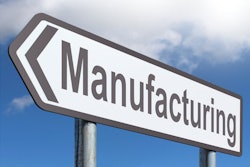
Two-day deliveries. Free shipping. One-click ordering. In-store pickup. Over the past several years, consumers' expectations of the e-commerce experience have rapidly evolved. The biggest shift: today's online shoppers want it all, from speed to flexible fulfillment to increased product choice.
The sea of change in how customers shop has rocked the supply chain, putting new demands on manufacturers and shippers that cannot be ignored. To stay competitive, organizations are rethinking their supply chain strategies and business requirements.
But rising to the challenge of the new status quo is just the start. Manufacturers and shippers that can identify and address their supply chain challenges, and then tap into a growing world of digital solutions, will position their organizations to be a more competitive force in this new era of e-commerce.
The New Normal
It can certainly feel like modern consumers are asking for the moon: they want products in stock, delivered immediately, with no shipping charges and free returns. In one recent survey, 91 percent of consumers reported that free shipping made them more likely to become a repeat customer. A consumer trends report by Kibo reveals that more than half of shoppers expect manufacturers to have items in stock, and that 45 percent believe manufacturers will have a greater variety of items available than retailers.
The same research shows that picking up online orders at stores has become commonplace. Even more interesting: two-thirds of customers expect in-store associates to have deep knowledge of their personal order histories. These are just a few examples, but the pattern is clear: Amazon’s innovations have dramatically impacted customer expectations when it comes to product assortment, fulfillment speed and the ability to customize product delivery.
That's left quite a few manufacturers and shippers stymied at how to reconfigure their supply chain to deliver in this new normal. Meeting customer demands is certainly paramount, and failure to do so can damage the brand. But for supply chain executives, there's the added pressure of creating a sustainable system that addresses these demands without blowing up the budget.
One Bite at a Time
So what does a supply chain that meets these evolving needs look like? At the core, it needs to be agile and flexible enough to handle the new complexities. How each organization gets there varies, and a one-size-fits-all model isn't going to work. Instead, manufacturers succeeding in this arena are aligning their supply chain and operating models with their business strategy. That means connecting the business drivers and strategy to win with customers and consumers (consumer, customer and brand promise) with the design of the supply chain to deliver on these.
A re-imagined supply chain is an exciting but also overwhelming prospect. This is where manufacturers can lean into the old adage about how to eat an elephant (one bite at a time). Consider starting by succinctly defining the brand's promise to consumers and then tackling issues around product assortment, fulfillment customization, reliability, and convenience or speed.
Customer feedback will undoubtedly play a big role. Prioritizing areas of complaints offers a natural starting point: if on-time delivery is the top issue, solve that first, and then examine inventory, order customization and other related aspects. Setting mid-term and long-term goals also helps prioritize technology and resource investments.
The Future is Digital
A “smarter" connected supply chain depends on technology. Artificial intelligence, machine learning, robotics and the industrial IoT are paving the way for real-time connectivity, fully integrated data and automated processes. The results of this digital transformation can be game-changing.
For example, IoT devices and haptic sensors in warehouses make it that much easier to not only monitor inventory, labor, and health and safety, but also meet fulfillment expectations. The development of digital capabilities that integrate planning, supply, manufacturing, quality, warehouse, transportation, marketing and customer service will eliminate information gaps, provide a single source of truth and transform supply chains end to end. So-called digital twin technology uses device-gathered data to create digital models of real-world processes that can then be analyzed and improved.
This transformation can't happen in a vacuum. By collaborating with industry partners to share information and network improvements, manufacturers can disperse the costs and ultimately provide more transparency for their employees and customers. It's a lot to consider, and it won't happen all at once, but it will indisputably happen. And for those that recognize and embrace evolving consumer needs and their role in meeting them, the future is full of opportunity.
















